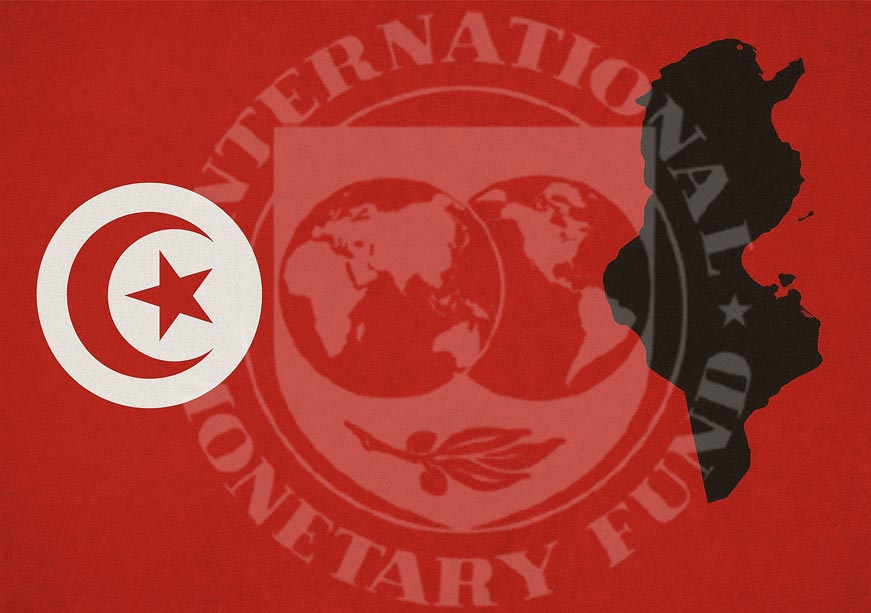Tunisia IMF Outlook Signals Fragile Stability
Tunisia manages a narrow stability path as USD/TND (TND=X) volatility stays muted and oil (CL=F) risk caps disinflation; IMF projects 2.5% growth in 2025 and a ~3% deficit, keeping spreads elevated while duration premia anchor the local curve amid high global rates.

Tunisia’s macro signal is guarded normalization under tight external and fiscal constraints. The IMF’s baseline—real GDP growth of 2.5% in 2025 easing to 2.1% in 2026, inflation at 5.9% and 6.1%, and fiscal deficits near 3.1% and 3.3% of GDP—frames a policy mix that defends nominal anchors rather than chasing demand. With public debt hovering around 80% of GDP and limited market access, authorities are managing rollover risk and imported inflation, not engineering an investment upcycle. The central bank’s high-single-digit policy rate preserves positive real short rates against a 6% inflation path, but the credit impulse stays weak as banks price liquidity and duration risks into lending spreads.
The transmission mechanism is linear and constrained. Tight liquidity and a cautious policy rate compress second-round inflation while curbing working-capital finance for SMEs. A managed dinar caps imported price pressure but requires active balance-sheet discipline where banks carry foreign-currency exposures. The current-account gap, near low single digits of GDP, is narrowing more on import compression than on export dynamism; tourism receipts and remittances support seasonality, yet energy and cereal import bills keep pass-through live if global prices or the dollar strengthen. With food and fuel composing a large share of the CPI basket, disinflation depends more on external prices and exchange-rate stability than on slack alone.
Macro spillovers concentrate in the sovereign curve and bank balance sheets. With global core rates still elevated, local bonds must clear real term premia; the 5–10 year segment will continue to price inflation risk, refinancing needs, and a thin nonresident bid, keeping nominal yields in high single digits to low double digits even as the front end steadies. That curve shape reinforces crowding-out: the treasury absorbs domestic savings, constraining corporate paper and lengthening bank asset duration. Funding conditions therefore channel credit to lower-risk, export-linked borrowers while postponing capex in construction, logistics, and energy services. A firmer euro against the dollar would marginally ease USD-linked import costs, but the effect is gradual rather than catalytic.
The fiscal arithmetic remains binding. A deficit near 3% of GDP with borrowing costs elevated implies an upward drift in the interest-to-revenue ratio and minimal headroom for countercyclical outlays. Wage rigidities and generalized subsidies limit the share of capital expenditure in the budget, while revenue gains must come from base broadening and compliance rather than headline rate hikes that could dampen formalization. Without concessional or program-anchored financing, shifting the composition of spending is as important as its level: subsidy retargeting and payroll discipline deliver durable savings, whereas one-off cuts do not alter the medium-term trajectory.
Sectorally, the baseline implies incremental, not breakout, gains. Export-oriented manufacturing, IT-enabled services, and tourism can lift volumes on currency stability and steady EU demand elasticity, but thin pricing power and higher working-capital costs cap margin expansion. Large-ticket projects in power and transport require blended finance to proceed; absent that, execution risk delays multiplier effects. Households face real income erosion while rates remain restrictive, weighing on discretionary consumption and housing activity. The energy balance is a pivot: sustained oil above recent averages would widen the trade deficit, lift headline CPI, and raise local issuance costs.
Markets will read the IMF path as credit-stabilizing but growth-constraining. Currency management aims to keep USD/TND volatility low, preserving inflation anchors and debt-service optics. Duration risk remains priced: without an external anchor—program financing, firm conditionality, or partial guarantees—sovereign spreads versus U.S. Treasuries will compress only gradually. Equity flows stay tactical and earnings-sensitive; valuation expansion hinges on a narrower rate-inflation wedge and a clearer loan-growth runway for banks.
Forward risks are asymmetric. A $10/bbl oil shock would likely widen the trade gap by roughly 0.5–0.7 percentage points of GDP and push headline inflation back above 6%, forcing tighter liquidity and lifting local yields. Delays in subsidy retargeting or wage restraint would nudge the deficit toward the mid-3% range and intensify rollover pressure. Conversely, a benign external mix—softer dollar, lower oil, and mild global disinflation—could pull inflation below 5.5% by late 2026 and unlock 50–100 basis points of local easing without destabilizing the dinar.
Over the next 12–18 months, validation requires measurable progress: maintain a narrow quarterly volatility band in USD/TND (TND=X), keep the cash deficit near 3% of GDP, hold reserves at or above a three-month import cover, guide core inflation onto a ≤5.5% glide path by Q4-2026, and flatten the 5s10s local curve by 50–75 basis points. Meeting these markers converts guarded normalization into credible re-rating; missing them shifts the narrative back to fragility.





